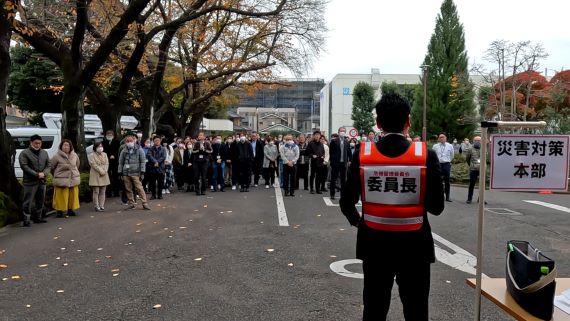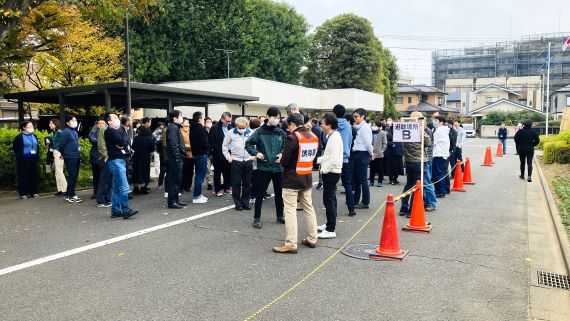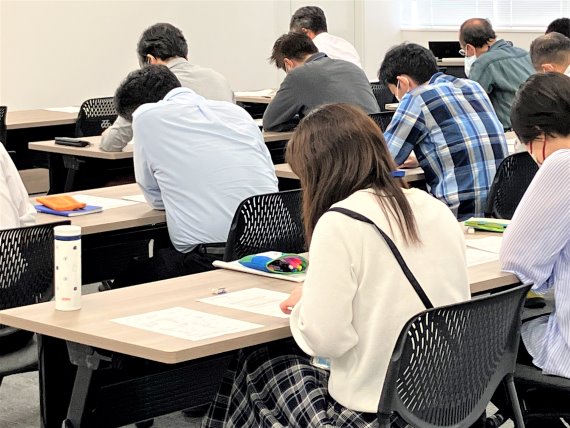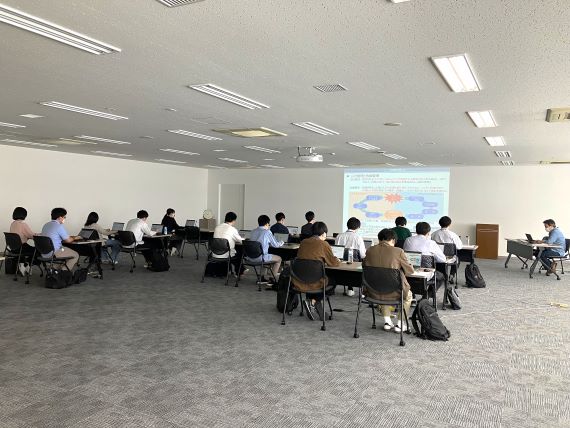Risk Management
INDEX
In order to improve corporate value and achieve sustainable growth for the entire group、we are building a risk management system to appropriately manage the value risks associated with our business activities.
In addition, we analyze and evaluate each risk related to business activities in general, and take measures in advance according to priority, in order to reduce the occurrence of risks that have a significant impact on business.
Information Security
Basic concept / Idea
In the Sanken Group, we recognize that information related to management, technology, and sales is a valuable asset, and in order to meet the trust of stakeholders, we have established "Management Philosophy," "Sanken Conduct Guidelines," and "Information Management regulations”.These regulations define guidelines for the appropriate management and prevention of leakage of information, including personal information and confidential information of customers and business partners, as well as compliance with various guidelines related to IT security environment, aiming to maintain and improve information security.
Information security management system
The information security management system of the Sanken Group is managed by the Crisis Management Committee, which serves as an advisory body to the president. The committee is composed of the General Affairs and Human Resources Department Head (Committee Chair), Chief Information Security Officer (CISO), and various department heads from relevant departments. The committee deliberates on and evaluates various measures, conducts investigations into the causes of incidents, and discusses prevention strategies. The operation status of implemented measures is regularly reported to the president. In terms of cyber security measures, under the oversight of the CISO and supported member who is the cyber security practitioners (Head of DX Promotion Department), the committee also reviews and reports on the monitoring of cyberattacks, incident response, and progress tracking of various measures
Information security education
To maintain and improve information security throughout the Sanken Group, we conduct information security education for all employees and perform targeted email attack training at least once a year. The information security education incorporates topics related to information management into the monthly "Compliance Communication (Web Education)" to provide individuals with opportunities to learn how to address risks. In order to increase security awareness, we also conduct emergency response training, simulating cyberattacks. We ensure that reporting procedures for discovering abnormalities during the use of IT equipment are clearly defined, enabling us to respond promptly by training and establishing a system for employees.
Privacy Policy
In the Sanken Group, we comply with the "Act on the Protection of Personal Information" and other relevant guidelines in Japan and other countries to ensure the safe and appropriate management of personal information of our customers, business partners, shareholders, investors, and others. The purpose of use of personal information, contact information for inquiries, and the security measures are disclosed in our Privacy Policy, which is available on our website.
Crisis Management
The Sanken Group has established the Disaster Response Manual and the Business Continuity Plan (BCP) to prepare for natural disasters, the outbreak of infectious diseases, and other risks that could seriously affect the Group's management and business activities, and is working to strengthen its crisis-management system.
In accordance with the two basic policies, the basic approach is to prepare for disasters before they occur and to be able to respond quickly and accurately in the event of a disaster in order to minimize their impact. In normal times, we formulate manuals for initial response and business continuity in preparation for the occurrence of disasters.
In the area of disaster evacuation drills, the free address system and the flextime system were introduced, and it was difficult to respond to the situation by conventional methods. Therefore, we are continuously working to further enhance our ability to respond to serious disasters, such as by constructing a new system for calling in the event of evacuation.
We have also introduced a Safety Confirmation System (ECS) for all employees, a system that promptly confirms the safety of employees in the event of a crisis. This system leads to prompt support.
With regard to human safety management at overseas bases, we have formulated an International Crisis Countermeasures Manual and are sharing information from normal times, which we believe will enable us to respond quickly in the event of an emergency. We are implementing this manual.
Depending on the severity of the crisis, we will establish a disaster response headquarters headed by our President and Representative Director.
Based on the basic policy, the Disaster Response Headquarters promptly gathers and communicates information across the Sanken Group in ① ensuring safety and rescuing human life, ② gathering information and preventing secondary disasters, ③ early resumption and BCP of business, and ④ contributing to and supporting local communities. The headquarters also makes decisions and implements them promptly. In order to maintain and strengthen these crisis management systems, the Crisis Management Committee, which oversees the entire Group, meets regularly to identify, analyze and respond to risks.
In addition, the Crisis Management Committee manages disaster stockpiles, conducts various drills, and takes various measures to raise the level of disaster countermeasures for the entire Group to prepare for emergencies.
As one of our measures, we regularly conduct sales of stored food at retail stores on the premises of our headquarters to raise awareness of disaster prevention.
Evacuation training


Export and Import Control
We have established the Foreign Exchange and Foreign Trade Law, the Ministerial Ordinances and the Customs Law as well as export and import-related laws and regulations, as well as our own Security Export Control Regulations and Import Control Regulations. We pay close attention to our voluntary control and comply with the laws and regulations of our home country and our trading partners.
In order to ensure proper import and export control, we properly determine whether the goods (raw materials, parts, equipment, etc.) and related technologies (design, manufacture, use, program, etc.) subject to transactions fall under the import and export regulations stipulated in the revised enforcement date of government ordinances, etc., and promote compliance with laws and regulations.
For imports, we have established a system for securing our cargo and complying with laws and regulations, and have been certified as exceptional importers of AEO system by the Tokyo Customs, which is a supervisory authority, in 2012, and are still certified as such.
In exporting, we comply with laws and regulations related to security trade control, and have established in-house regulations to prevent violations. We have been certified as a CP company by METI. In 2014, we were certified as a specified shipper under the revised Air Cargo Security System (Ministry of Land, Infrastructure, Transport and Tourism), and we are working to improve security in air cargo transportation during export.
In addition, the Export/Import Control Committee, which manages all import/export operations, regularly conducts e-learning education and seminars for employees to improve legal compliance and compliance, and strives to improve skills and reduce import/export accidents. The number of import and export accidents has been on a downward trend since 2018, but we will continue to strive to reduce this number.
Originally, approximately 50% of the importation accidents were due to the omission of additional declaration (underfiling). However, as a result of the Company's efforts to take corrective measures to eliminate the accrual omission, there is currently almost no such incident. Currently, many of them are caused by factors of the importing partner, so we are proceeding with corrective measures and their improvement.
Accident rate
| 2017 | 2018 | 2019 | 2020 | 2021 | 2022 | |
|---|---|---|---|---|---|---|
| Import | 0.15% | 0.25% | 0.04% | 0.17% | 0.09% | 0.17% |
| Export | 0.05% | 0.02% | 0.02% | 0.00% | 0.03% | 0.05% |
Import and export education patterns


Intellectual Property
In order to maintain our competitive edge as a manufacturer in an increasingly competitive global market, it is important to maintain the competitiveness of our products and eliminate the entry of competitors by creating competitive products ahead of competitors through research and development that captures market needs and by appropriately protecting development results with intellectual property rights. For this reason, we are working closely with related divisions and intellectual property divisions, from the initial stages of product development to production and sales, to develop worldwide activities to acquire and utilize intellectual property rights with a high degree of checks and balances in order to maintain and improve brand value.
In addition, to ensure the stable continuation of efficient business activities, we thoroughly investigate intellectual property rights of other companies, avoid and prevent intellectual property risks, and strive to acquire external technologies.
From this perspective, we are focusing on fostering an intellectual property mindset through systematic intellectual property education activities for our employees and improving the environment for creating inventions, with the aim of becoming an intellectual property-oriented company that will prevail in the global market.